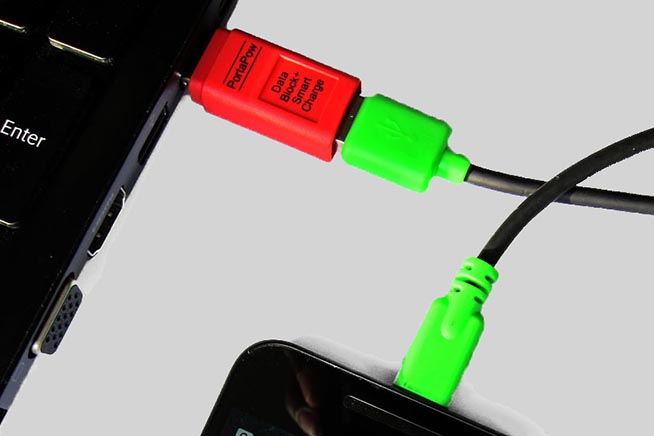The device acts as a filter: it blocks the threats by letting only the current needed to charge the battery pass through
We forgot the smartphone charger at home. What do we do? Like a bloodhound we start looking for a cable and especially a USB port to connect our cell phone. However, sometimes this solution can be harmful, because the device can be infected by some virus.
To prevent that, in addition to the electricity needed to charge the phone, a USB port also transfers some malware, someone invented the digital condom. The device, in fact, blocks the transfer of data from an unsecure source. Translated in simple words: even if we were to connect to an infected computer to recharge the device, only electricity would pass through the USB port, while the infected data remains in the PC's memory. Il condom USB, dunque, agisce come una sorta di filtro, facendo passare soltanto l’elettricità ed evitando spiacevoli sorprese.
PortaPow e SyncStop
Tra i “condom USB” più utilizzati al momento troviamo PortaPow. Il device USB, piccolo e di colore rosso, promette di proteggere i nostri dispositivi, bloccando i virus e altre forme di malware direttamente alla fonte. PortaPow, inoltre, è in grado di diminuire di 4 volte il tempo di ricarica.
 Fonte foto: PortaPow
Fonte foto: PortaPow
PortaPow collegato a un PC per fare da filtro
Il tool può essere acquistato in coppia su Amazon per meno di 13 dollari. Un’altra azienda che produce un device con funzionamento simile a PortaPow è SyncStop. Anche in questo caso il device impedisce che i nostri dispositivi siano infettati quando sono collegati a fonti non sicure.
